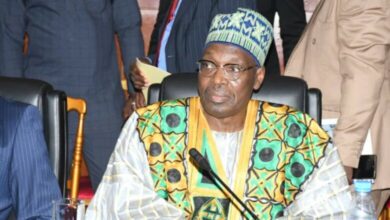It’s been 17 days since Kamto was excluded from the presidential election. Cameroon remains far from political stability. The Constitutional Council rejected Maurice Kamto’s candidacy. This changed the nation’s electoral landscape. What started as routine admin work became a trigger for wide democratic upheaval.
Two weeks after the opposition leader’s electoral ban was announced, the Central African nation has seen major political action. Young activists across big cities continue organizing protests. International observers express growing concern about October’s presidential vote quality.
Opposition unity remains broken. This is despite shared anger toward President Paul Biya’s continued rule after 43 years in power. Various political groups struggle to unite behind one alternative candidate. This gives the ruling party strategic advantages as the election approaches.
Diplomatic sources report growing behind-the-scenes talks. These involve international stakeholders, regional leaders, and civil society representatives. However, these secret talks have only increased public doubt. Citizens demand more transparency in their country’s democratic processes.
The exclusion has triggered major grassroots resistance in urban centers. Youth organizers use social media platforms to coordinate demonstrations. They also mobilize street protests. These directly challenge the government’s electoral story.
Political analysts identify three different scenarios. These could unfold following this two-week period of tension. First, Biya might secure another term amid wide voter apathy and system manipulation. Second, spontaneous unrest could emerge. This could mirror the political upheaval in neighboring Gabon during 2023. The third option involves popular pressure forcing genuine electoral reforms.
International human rights groups have expressed growing alarm about Cameroon’s electoral system quality. Human Rights Watch confirmed the Constitutional Council “backed the electoral commission’s decision to bar Maurice Kamto.” They noted he is “a key opposition leader and challenger to incumbent President Paul Biya, from the country’s upcoming presidential elections.”
The International Crisis Group warned that “Cameroon’s October presidential election will be a stress test for the country’s stability.” They added that “frustrations with the incumbent and ruling party, constraints on dissent, armed conflict and ethnic tensions all pose dangers.”
Youth resistance continues growing across major population centers. Protesters demand basic changes to what they see as an increasingly harsh system. Their message goes beyond simple electoral politics. It includes broader demands for economic opportunity. It also covers government accountability and real democratic representation.
Regional observers note that Biya’s advanced age adds another layer of complexity. He is currently 92 years old. CNN reported that “Cameroon’s 92-year-old President Paul Biya” has “held an iron grip on the Central African nation for nearly 43 years.” They noted he “has launched a reelection bid that could keep him in power until almost his 100th birthday.”
Civil society groups report that “most qualified voters are reluctant to register.” This is “because they think President Paul Biya plans to rig elections,” according to Voice of America. This highlights wide doubt about the electoral process.
As October approaches, tensions continue rising throughout the country. Whether Cameroon moves toward harsh rule, experiences destabilizing confrontation, or witnesses democratic renewal depends on forces much larger than any single political figure.
The youth-led movement represents something basically different from previous political challenges to Biya’s rule. These activists understand that genuine change requires sustained pressure across multiple fronts. This includes street demonstrations. It covers international advocacy. It also involves comprehensive voter mobilization efforts.
The coming weeks will prove critical for Cameroon’s democratic path. The government’s response to mounting pressure will matter. Opposition leaders’ ability to maintain unity will be key. The international community’s willingness to support democratic reforms will also be crucial. These factors will determine the outcome. This electoral crisis could become a trigger for positive change. Or it could lead to further entrenchment of harsh governance.
It’s been 17 days since Kamto was excluded from the presidential election. Each passing day brings new challenges to the nation’s political stability. The stakes could not be higher for this Central African nation of 28 million people. Decades of single-party rule have created deep institutional challenges. These extend far beyond any individual election cycle.
As political observers monitor developments, the question remains clear. What will the next 17 days bring to Cameroon’s evolving democratic struggle?
